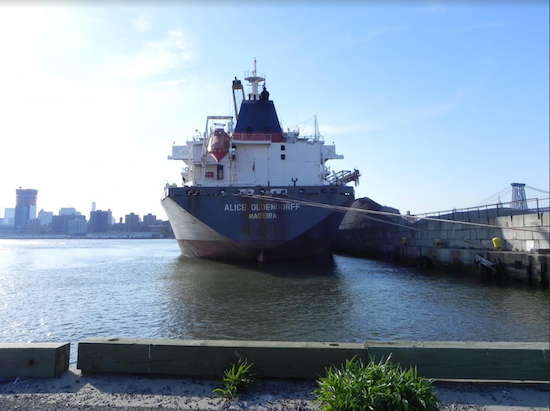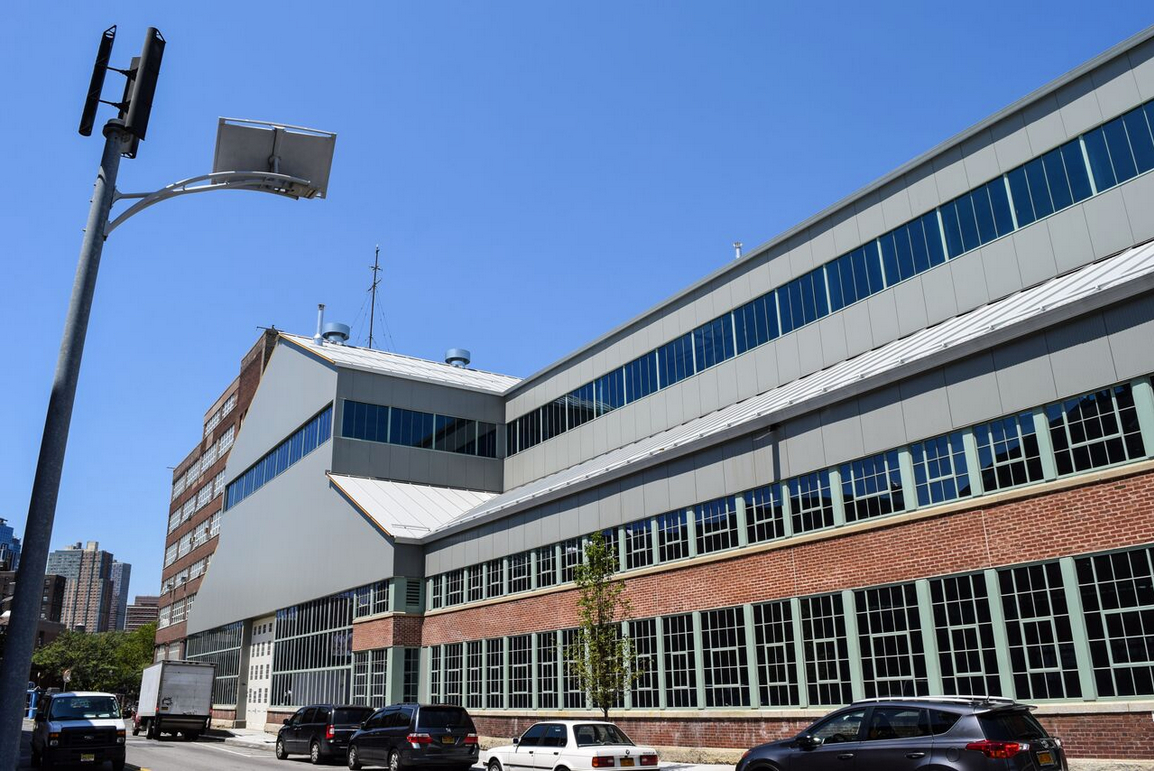Tour of Navy Yard, old & new, ties together three 19th-century Brooklyn icons

The historic Brooklyn Navy Yard is still a hub of activity today. The Alice Oldendorff delivers gravel to the port. Eagle photos by Paula Katinas
Andrew Sichenze, a lawyer from Bay Ridge, has many fond memories of the first time he visited the Brooklyn Navy Yard as a fresh-faced 12-year-old boy back in 1944. It was during World War II and young Sichenze had come to the Navy Yard to witness the christening of a majestic new ship.
“I had an uncle who worked in the Brooklyn Navy Yard. Seeing the ship christened was an amazing experience for a kid. It was so exciting,” Sichenze told the Brooklyn Eagle.
Sichenze made a return trip to the Brooklyn Navy Yard on the afternoon of May 17 as part of a group from the Municipal Club of Brooklyn taking a tour of the 300-acre site.
